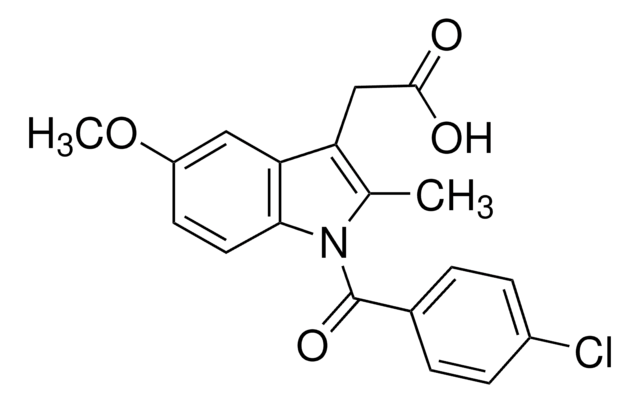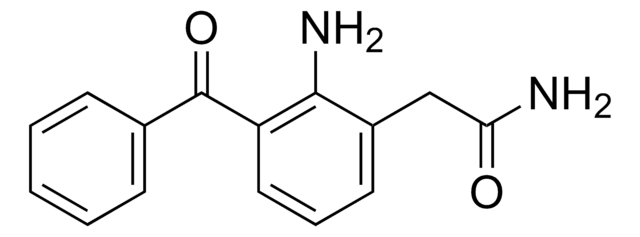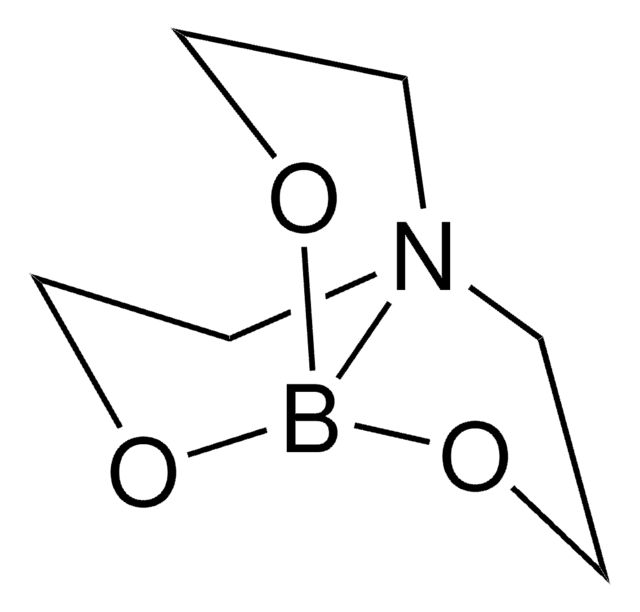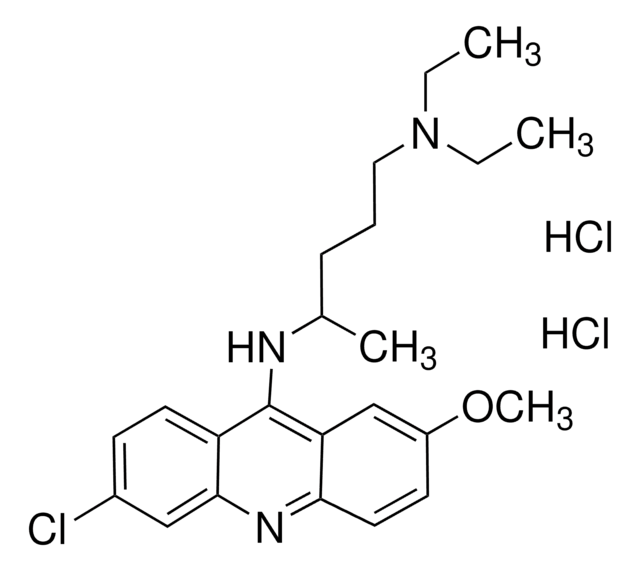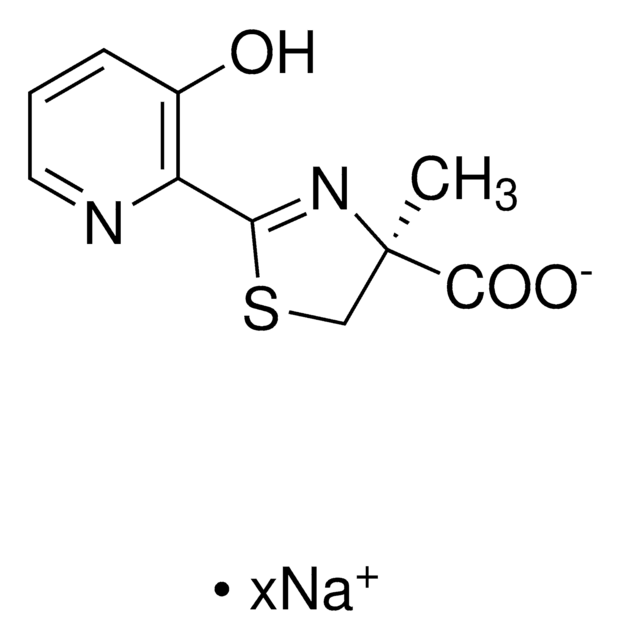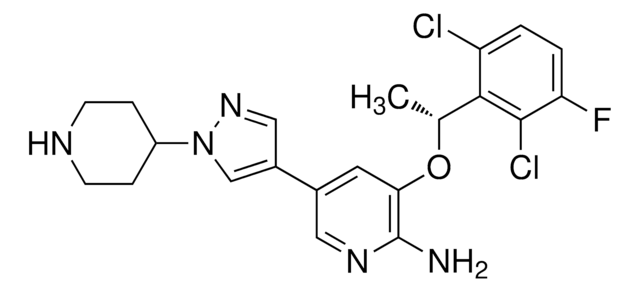SML0289
Bromfenac sodium
≥98% (HPLC)
Sinónimos:
2-Amino-3-(4-bromobenzoyl)benzeneacetic acid sodium salt
About This Item
Productos recomendados
Quality Level
assay
≥98% (HPLC)
form
powder
storage condition
desiccated
color
faintly yellow to dark yellow
solubility
H2O: ≥5 mg/mL
storage temp.
2-8°C
SMILES string
[Na+].Nc1c(CC([O-])=O)cccc1C(=O)c2ccc(Br)cc2
InChI
1S/C15H12BrNO3.Na/c16-11-6-4-9(5-7-11)15(20)12-3-1-2-10(14(12)17)8-13(18)19;/h1-7H,8,17H2,(H,18,19);/q;+1/p-1
InChI key
HZFGMQJYAFHESD-UHFFFAOYSA-M
Gene Information
human ... PTGS1(5742) , PTGS2(5743)
Application
- to study its ability to bind to melanin
- in the synthesis of bromfenac indolinone standard
- to analyze its permeability in porcine conjunctiva
Biochem/physiol Actions
signalword
Danger
hcodes
Hazard Classifications
Acute Tox. 3 Oral
Storage Class
6.1C - Combustible acute toxic Cat.3 / toxic compounds or compounds which causing chronic effects
wgk_germany
WGK 3
flash_point_f
Not applicable
flash_point_c
Not applicable
Elija entre una de las versiones más recientes:
Certificados de análisis (COA)
¿No ve la versión correcta?
Si necesita una versión concreta, puede buscar un certificado específico por el número de lote.
¿Ya tiene este producto?
Encuentre la documentación para los productos que ha comprado recientemente en la Biblioteca de documentos.
Los clientes también vieron
Nuestro equipo de científicos tiene experiencia en todas las áreas de investigación: Ciencias de la vida, Ciencia de los materiales, Síntesis química, Cromatografía, Analítica y muchas otras.
Póngase en contacto con el Servicio técnico